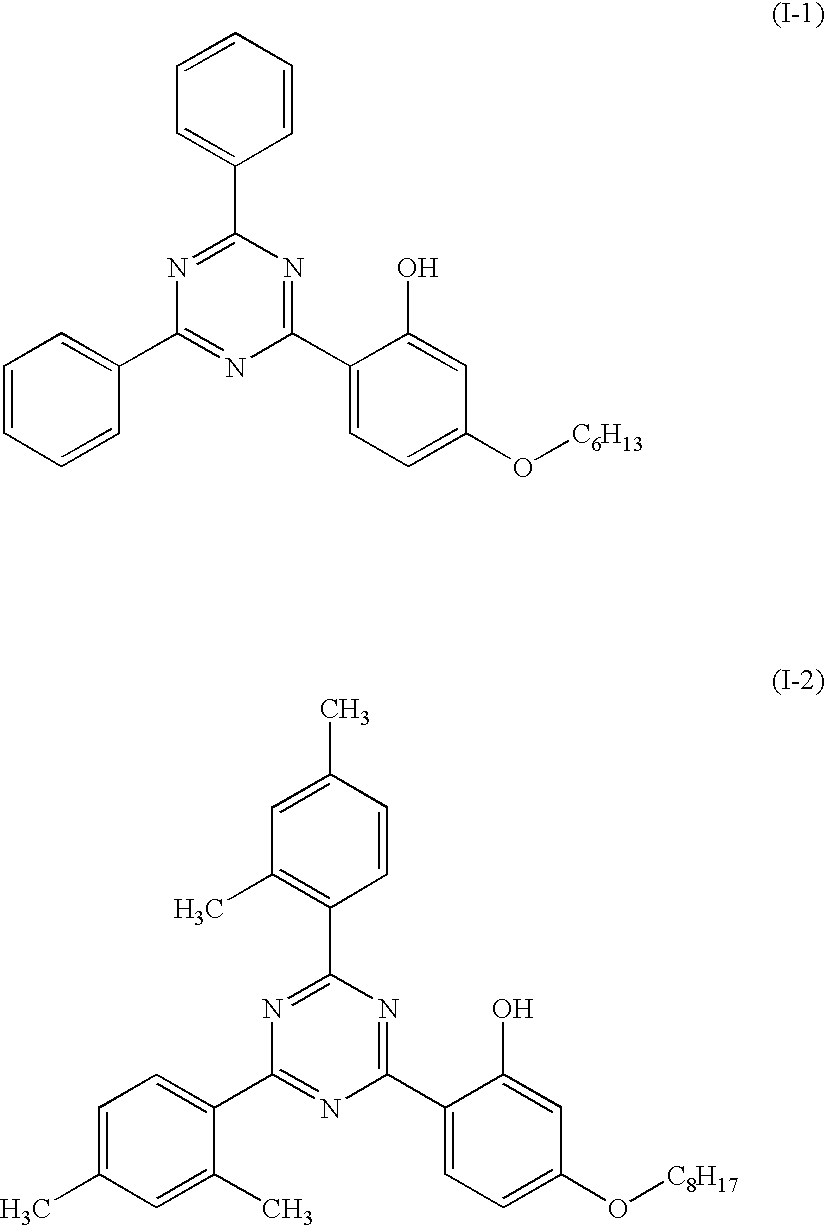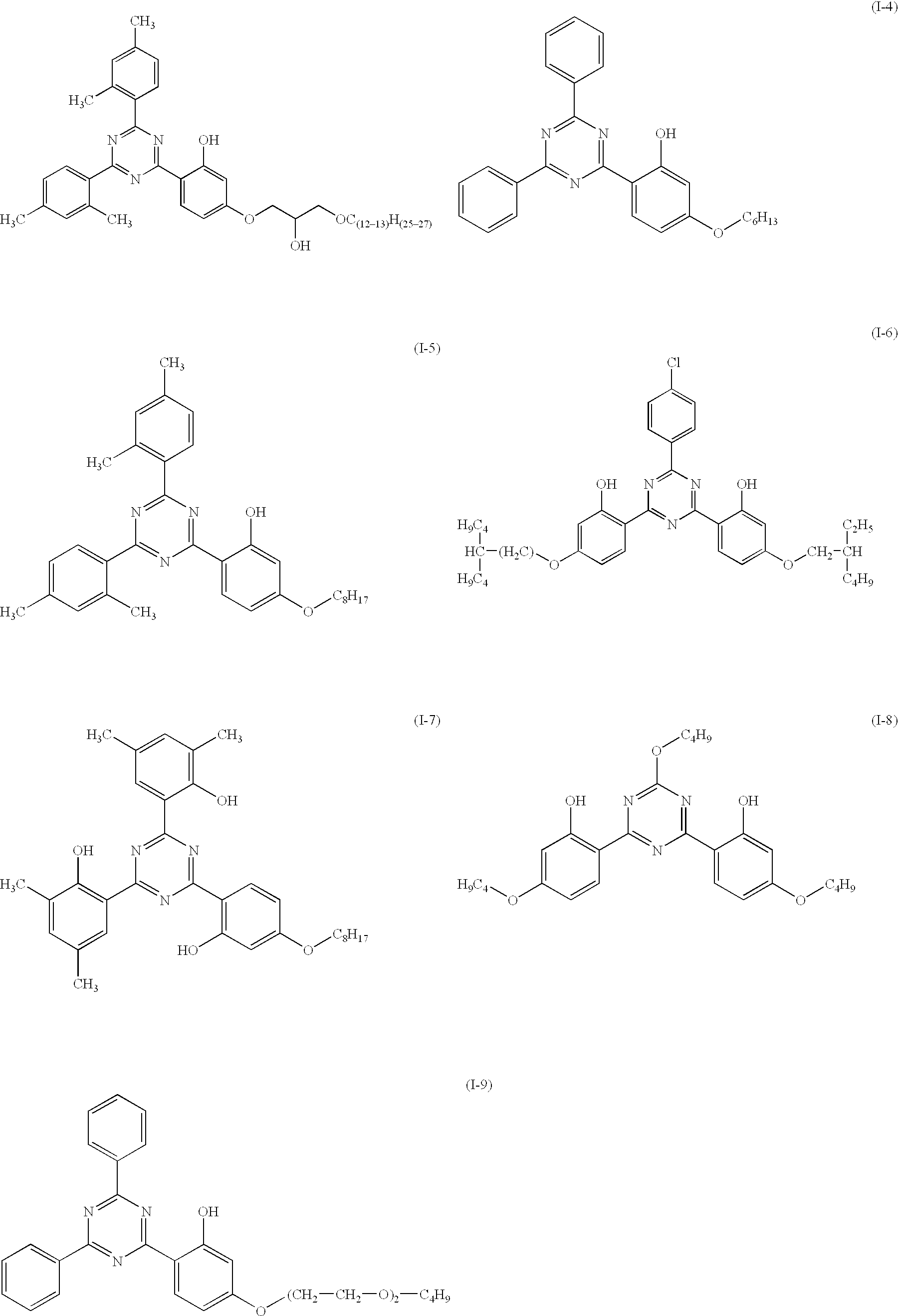UV-absorbing film and its use as protective sheet
a technology of ultraviolet light and protective sheet, which is applied in the direction of cellulosic plastic layered products, instruments, lighting and heating apparatus, etc., can solve the problems that the 50 inch screen can be expected to be very impractical, and achieve the effect of protecting against deterioration
- Summary
- Abstract
- Description
- Claims
- Application Information
AI Technical Summary
Benefits of technology
Problems solved by technology
Method used
Image
Examples
example 1
This example compares the UV-cut off properties of CTA film samples containing the invention compounds I-1 and I-2 with comparison film samples comprising known UV-absorbers.
Formulas of comparative compounds ##STR5## ##STR6##
Preparation of the Film Samples
In a glass reactor vessel of 500 ml equipped with an efficient stirrer 3.5 g of triphenylphosphate (plasticizer) was dissolved whilst stirring in a solvent mixture of 250 g of methylenechloride and 25 g of methanol. To this solution were added respectively
35 g of CTA and no UV-absorber (blank);
34.65 g of CTA and 0.35 g of UV-absorber (final conc. 1% by weight);
34.125 g of CTA and 0.875 g of UV-absorber (final conc. 2.5% by weight);
33.25 g of CTA and 1.75 g of UV-absorber (final conc. 5% by weight).
The mixtures were stirred at room temperature until clear solutions were obtained.
Onto a glass coating plate of 200.times.300 mm each of the prepared solutions was coated with a coating knife at a wet thickness of about 1 mm.
After drying ...
example 2
All film samples of the previous example were subjected to a light-stability test consisting of an exposure for 144 hours to a xenon light source of 180,000 Lux. Again a spectral transmittance curve was recorded from each sample and compared to the unexposed sample. The invention compounds showed no deterioration at all of their UV-cut off properties, nor was this the case for the comparison compounds except for C-6 and C-7.
PUM
| Property | Measurement | Unit |
|---|---|---|
| size | aaaaa | aaaaa |
| wavelength | aaaaa | aaaaa |
| wavelength region | aaaaa | aaaaa |
Abstract
Description
Claims
Application Information
 Login to View More
Login to View More - R&D
- Intellectual Property
- Life Sciences
- Materials
- Tech Scout
- Unparalleled Data Quality
- Higher Quality Content
- 60% Fewer Hallucinations
Browse by: Latest US Patents, China's latest patents, Technical Efficacy Thesaurus, Application Domain, Technology Topic, Popular Technical Reports.
© 2025 PatSnap. All rights reserved.Legal|Privacy policy|Modern Slavery Act Transparency Statement|Sitemap|About US| Contact US: help@patsnap.com



